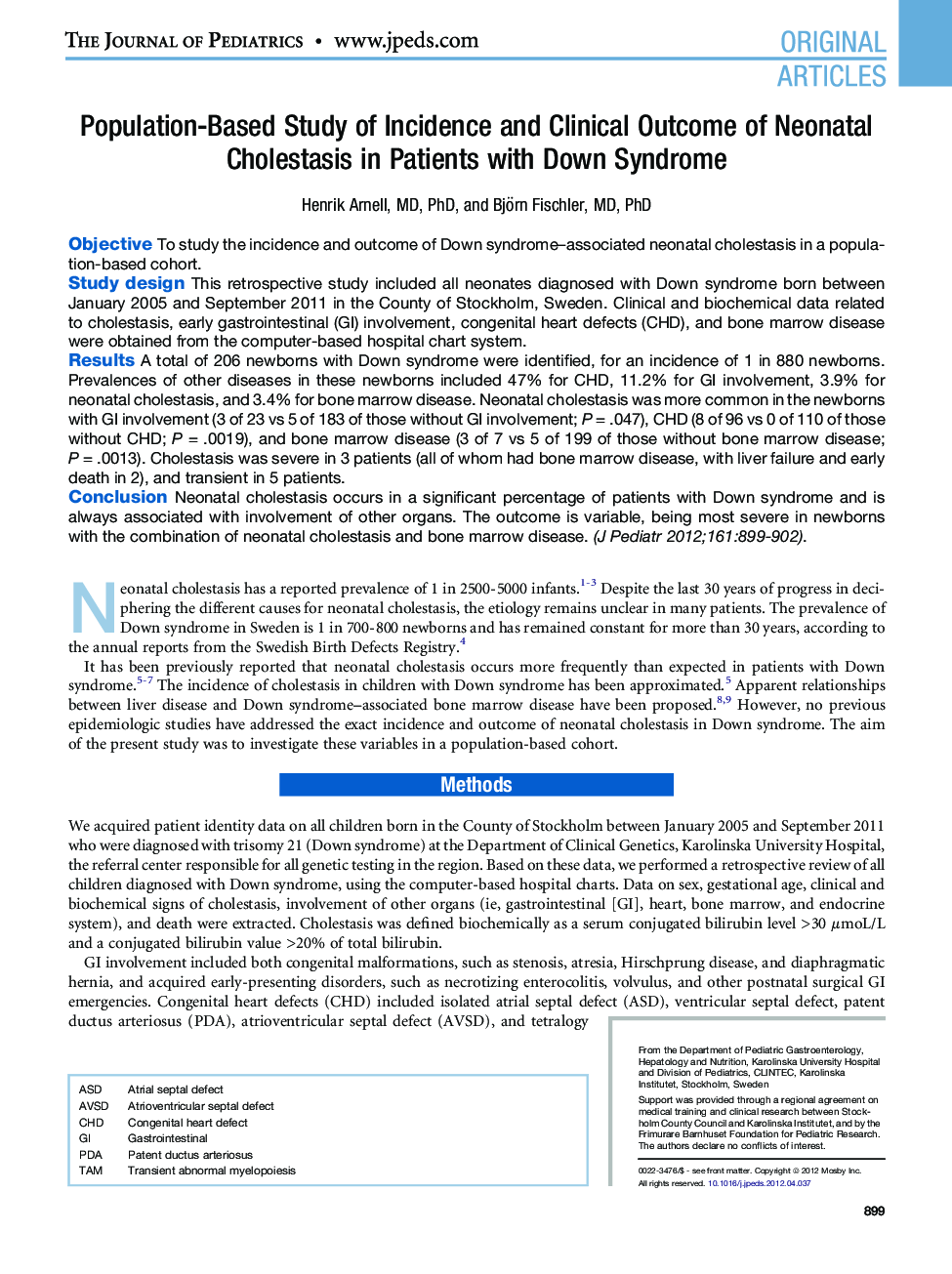| کد مقاله | کد نشریه | سال انتشار | مقاله انگلیسی | نسخه تمام متن |
|---|---|---|---|---|
| 6224730 | 1607476 | 2012 | 4 صفحه PDF | دانلود رایگان |

ObjectiveTo study the incidence and outcome of Down syndrome-associated neonatal cholestasis in a population-based cohort.Study designThis retrospective study included all neonates diagnosed with Down syndrome born between January 2005 and September 2011 in the County of Stockholm, Sweden. Clinical and biochemical data related to cholestasis, early gastrointestinal (GI) involvement, congenital heart defects (CHD), and bone marrow disease were obtained from the computer-based hospital chart system.ResultsA total of 206 newborns with Down syndrome were identified, for an incidence of 1 in 880 newborns. Prevalences of other diseases in these newborns included 47% for CHD, 11.2% for GI involvement, 3.9% for neonatal cholestasis, and 3.4% for bone marrow disease. Neonatal cholestasis was more common in the newborns with GI involvement (3 of 23 vs 5 of 183 of those without GI involvement; P = .047), CHD (8 of 96 vs 0 of 110 of those without CHD; P = .0019), and bone marrow disease (3 of 7 vs 5 of 199 of those without bone marrow disease; PÂ =Â .0013). Cholestasis was severe in 3 patients (all of whom had bone marrow disease, with liver failure and early death in 2), and transient in 5 patients.ConclusionNeonatal cholestasis occurs in a significant percentage of patients with Down syndrome and is always associated with involvement of other organs. The outcome is variable, being most severe in newborns with the combination of neonatal cholestasis and bone marrow disease.
Journal: The Journal of Pediatrics - Volume 161, Issue 5, November 2012, Pages 899-902